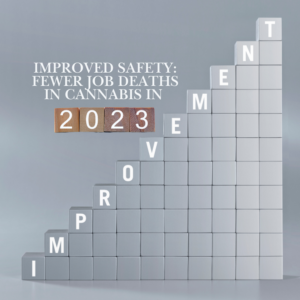Skilled Worker Shortage Challenges Fire Protection in 2025

Skilled Worker Shortage Challenges Fire Protection in 2025: Implications for the Cannabis Industry
The cannabis industry, one of the fastest-growing sectors globally, is facing an unlikely but critical challenge in 2025: a shortage of skilled workers in fire protection. As cannabis cultivation and processing facilities expand to meet growing demand, they must adhere to stringent fire safety regulations. However, the shortage of qualified fire protection professionals is creating significant hurdles, jeopardizing safety and operational efficiency.
This article explores the implications of the skilled worker shortage on fire protection within the cannabis industry, examines its underlying causes, and proposes strategies to mitigate the issue.
The Intersection of Cannabis and Fire Protection
The cannabis industry is highly regulated, particularly in areas related to health, safety, and environmental standards. Fire protection is a critical aspect of compliance, especially for facilities involved in cultivation, extraction, and processing.
Cannabis operations often utilize volatile substances like ethanol and butane in extraction processes, making them susceptible to fire risks. Additionally, the high-energy consumption in grow operations—due to lighting, HVAC systems, and other equipment—further elevates fire hazards.
Proper fire protection measures, including sprinkler systems, smoke detectors, fire extinguishers, and well-trained personnel, are essential to mitigate these risks. However, the current shortage of skilled fire protection workers is creating gaps in safety protocols, inspections, and equipment maintenance.
Understanding the Skilled Worker Shortage
An Aging Workforce
The fire protection industry, like many technical trades, is grappling with an aging workforce. Many seasoned professionals are retiring, and there aren’t enough young workers entering the field to replace them.
Insufficient Training Programs
Fire protection requires specialized knowledge of codes, standards, and equipment. The limited number of training programs and certification opportunities is a major bottleneck in developing a new generation of professionals.
Increased Demand Across Industries
The cannabis industry isn’t the only sector experiencing growth. Data centers, renewable energy facilities, and manufacturing plants also require robust fire protection, leading to increased competition for skilled workers.
Perception Challenges
Trade jobs, including those in fire protection, often suffer from misconceptions about career prospects. This stigma has deterred younger workers from pursuing careers in the field, exacerbating the shortage.
Impacts on the Cannabis Industry
The skilled worker shortage in fire protection has far-reaching implications for the cannabis industry, affecting compliance, safety, and costs.
Compliance Challenges
Cannabis businesses operate under strict regulations, including fire safety codes mandated by state and local authorities. A lack of skilled workers can delay inspections, installation of fire suppression systems, and certification processes. Non-compliance can result in hefty fines, shutdowns, or delays in obtaining licenses.
Increased Fire Risks
Without adequate fire protection measures, cannabis facilities are at higher risk of fire incidents. This not only endangers lives but also jeopardizes property and inventory, potentially leading to millions of dollars in losses.
Escalating Costs
The limited availability of fire protection professionals is driving up service costs. Cannabis businesses must often pay a premium to secure the expertise needed for fire system installation, maintenance, and inspections.
Project Delays
The construction and expansion of cannabis facilities are being delayed due to the unavailability of qualified fire protection professionals. This impacts the industry’s ability to scale operations and meet market demand.
Strategies to Address the Skilled Worker Shortage
While the skilled worker shortage poses a significant challenge, there are actionable strategies that the cannabis industry and the fire protection sector can adopt to mitigate the issue.
Investing in Workforce Development
Governments, industry associations, and businesses must invest in workforce development programs that promote careers in fire protection. Scholarships, apprenticeships, and partnerships with technical schools can help attract young talent.
Leveraging Technology
Automation and advanced technology can help fill gaps caused by worker shortages. For example:
Smart Fire Suppression Systems: Automated systems can detect and respond to fires with minimal human intervention.
Remote Monitoring: IoT-enabled fire protection systems allow for real-time monitoring, reducing the need for on-site personnel.
Enhancing Training and Certification
Expanding training programs and simplifying certification processes can make it easier for new workers to enter the field. Online training and modular certification courses can help overcome geographic and logistical barriers.
Promoting Trade Careers
Public awareness campaigns that highlight the benefits of trade careers, including competitive salaries and job stability, can help attract more workers to the fire protection field.
Collaborating with Industry Partners
The cannabis industry can collaborate with fire protection firms and regulators to ensure that safety measures are prioritized and resources are allocated effectively.
Long-Term Benefits of Addressing the Shortage
Proactively addressing the skilled worker shortage in fire protection will yield long-term benefits for the cannabis industry, including:
Enhanced Safety: Reduced fire risks will protect employees, facilities, and inventory.
Regulatory Compliance: Consistent access to fire protection expertise will ensure that businesses meet all legal requirements.
Cost Savings: A larger workforce will stabilize service costs, making fire protection more affordable.
Industry Growth: By resolving bottlenecks caused by safety concerns, the industry can continue to expand and meet market demand.
Prioritizing Safety in a Growing Industry
The cannabis industry’s rapid growth in 2025 underscores the importance of addressing infrastructure challenges like fire protection. While the skilled worker shortage poses significant risks, it also presents an opportunity for innovation and collaboration.
By investing in workforce development, leveraging technology, and fostering partnerships, the cannabis industry can overcome this challenge and ensure a safe and sustainable future. For an industry built on innovation, tackling the fire protection issue head-on is not just a necessity but a responsibility.











